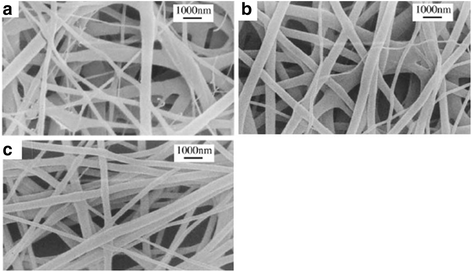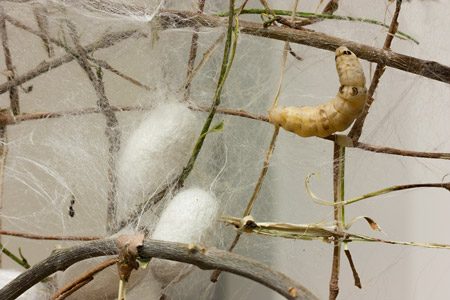

The rats didn’t reject the liver-cell-growing scaffolds, showing that they don’t adversely affect a host’s immune system. When implanted in rats, the scaffolds also helped grow liver cells. Toward this goal, a unique silk hydrolysis method was developed to fabricate micron-sized silk fibers as fillers with a silk matrix for reinforce- ment. The approach was to exploit silk microfiber reinforcements as a step toward orthopedic biomaterials for repairs.

The growing liver cells on the scaffold exhibited liver-cell-specific functions such as albumin and urea syntheses, and the ability to carry out the detoxification process for over three weeks. properties of silk scaffolds to match the requirements for bone. The porous scaffold efficiently nourished the cells by supplying nutrients and oxygen. The use of bi-layer silk fibroin scaffolds and small intestinal submucosa matrices to support bladder tissue regeneration in a rat model of spinal cord injury. In studies with specific human and rat liver cells, the scaffold allowed the liver cells to attach and grow, eventually forming liver cell clusters. They then tested its potential to regenerate liver cells in cell culture and rats. In search of a safe therapy for deadly liver diseases, scientists from the Indian Institute of Technology, Guwahati, led by Biman Mandal, invented a silk-protein-based porous scaffold. of spider silk or solar-energy-based protein powder) Controlled self-assembly of. Liver transplantation is a way out, but it is expensive and the recipient’s immune system often rejects donors’ liver cells. Microbial food cultures and genetically engineered microbial production (e.g. These artificially grown liver cells are capable of mimicking the functions and growth of normal liver cells, making the scaffold potentially useful for replacing damaged liver tissues in patients with fatal liver diseases.ĭrug-induced toxic effects, viral infections and alcohol abuse cause liver damage, resulting in end-stage liver diseases such as cirrhosis. Seeding efficiency of human mesenchymal stem cells (hMSC) was highest for nontreated and thermally treated scaffolds, and all scaffolds supported hMSC viability over time.Researchers have synthesised a silk-protein-based scaffold that can help regenerate liver cells 1. Scaffold geometry (45° and 90° layer rotations) affected the mechanical properties for DHT and EDC crosslinked scaffolds. Scaffold properties, including relative crosslink density, mass loss upon rinsing, and compressive modulus revealed that EDC crosslinked scaffolds were the most robust with moduli of approximately 4 kPa. In silico study confirms the presence of active amino sequences and molecular level interactions. Dual protein-based hybrid scaffolds imparted the molecular level interactions to improve the functionality of the scaffold. Surface morphologies of the different treatment groups were characterized using scanning electron microscopy. Novel flax/silk fibroin protein nanofiber was electrospun to enhance the biological activities towards bone regeneration.

Resulting Bioplotted soy protein scaffolds were cured using 95% ethanol and post-treated using dehydrothermal treatment (DHT), a combination of freeze-drying and DHT, and chemical crosslinking using 1-ethyl-3-(3 dimethylaminopropyl)carbodiimide (EDC) chemistry. Silk is a natural protein with good biocompatibility, cell affinity, biomechanical properties and biodegradability, low immunogenicity, and the growth-promoting factor arginine-glycine-aspartic acid contained in the peptide chain (Arg-Gly-Asp) is conducive to the adhesion, growth, migration, proliferation and differentiation of cultured cells on the surface, and is suitable for tissue engineering scaffold materials. The addition of dithiothreitol to soy slurries demonstrated the importance of disulfide bonds in forming solid structures upon printing. The optimal mass flow rate for printing soy slurry at 27☌ was 0.0072☐.0002 g/s. This process involved measuring the mass extrusion flow rate of the slurry from the instrument, which was directly affected by the extrusion pressure and the soy protein slurry properties. A method to verify the structural integrity of resulting scaffolds during printing was developed. In this study, soy protein slurry was successfully printed using the 3D Bioplotter to form scaffolds. To date, exploration in printing 3D natural protein scaffolds is limited. The solution is to be dialyzed against water to yield the natural silk fibroin. In the extraction process, degummed silk fibre is dissolved in water using different salts such as CaCl 2, LiBr, etc. Fabricating three-dimensional (3D) porous scaffolds with controlled structure and geometry is crucial for tissue regeneration. Silk fibroin protein is harvested from silkworm (Bombyx mori) cocoon and is separated from sericin.


 0 kommentar(er)
0 kommentar(er)
